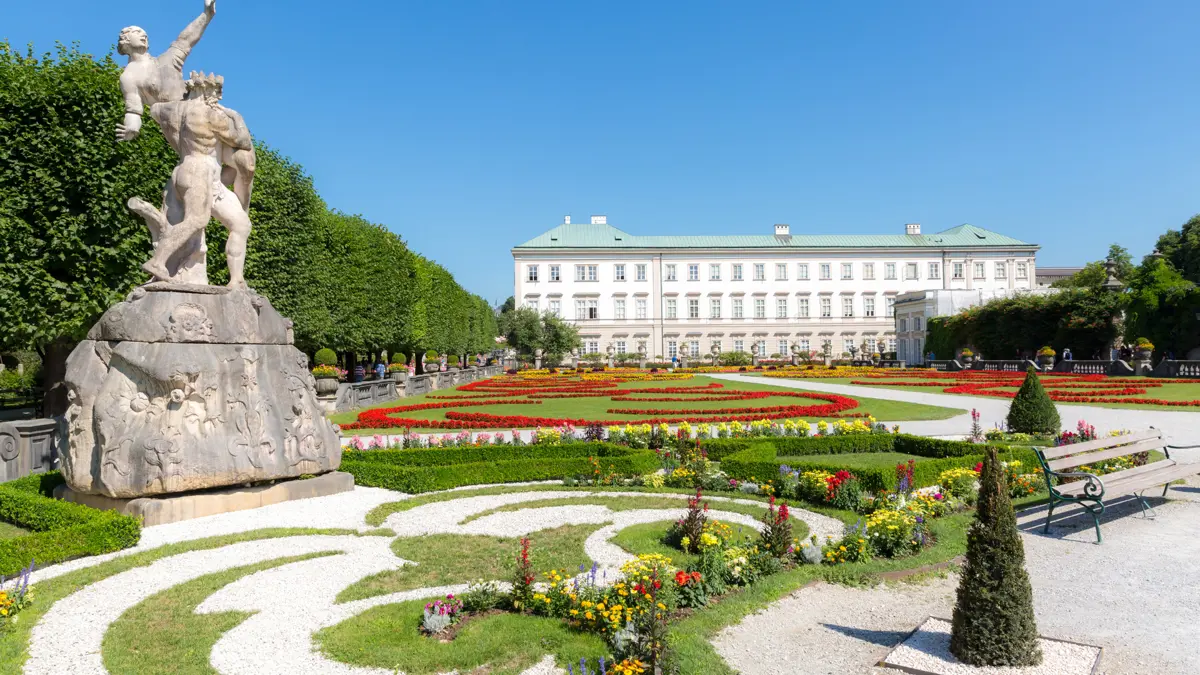
Europe's glorious gardens

The great outdoors. Glorious gardens. A little escape into nature’s most beautiful corners.
From fragrant Alpine meadows to perfectly manicured palace gardens, Europe is full of floral treasures waiting to be discovered and many of them are just a short stroll from your walking holiday base.
We’ve rounded up some of our favourite gardens across Europe, where you can soak up the scenery, breathe in the blossoms, and maybe even pick up a few ideas to bring back home. Whether you’re green-fingered or just garden-curious, it’s the perfect way to connect with nature while exploring the very best of the continent on foot.
For those who stop to smell the roses (and maybe take a few photos too), welcome. You’re going to love what we’ve rounded up.
Mirabell Gardens in Salzburg, Austria
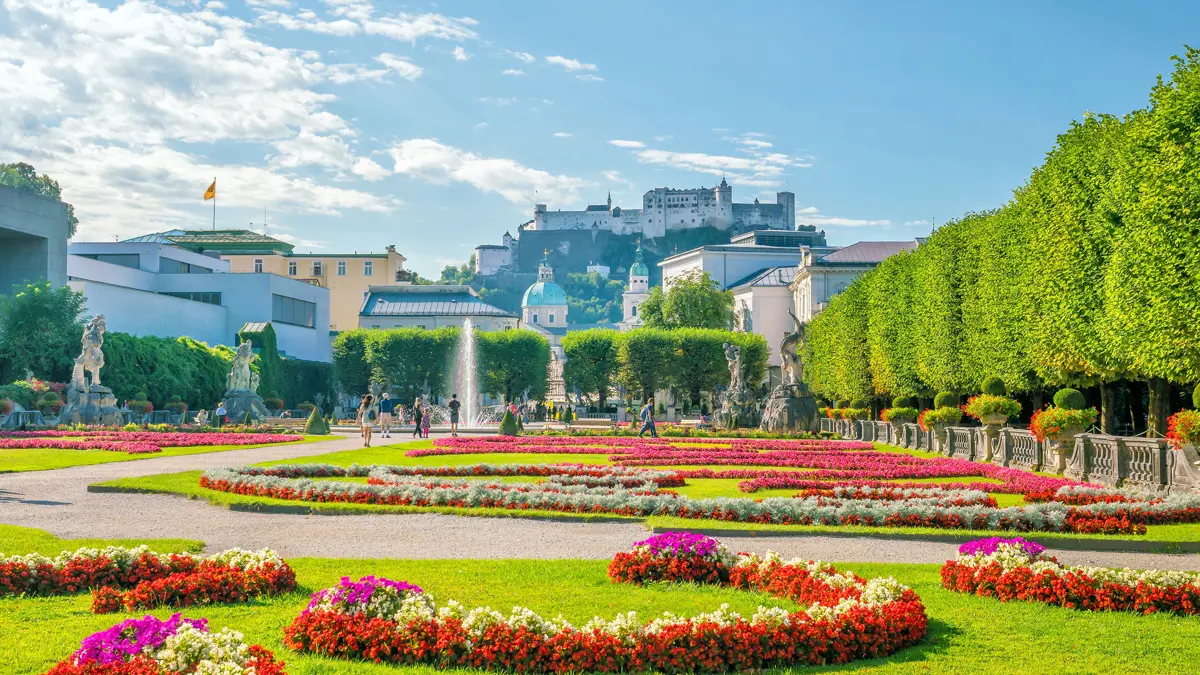
Fans of The Sound of Music will instantly recognise the iconic Mirabell Gardens, where some of the film’s most beloved scenes were shot. Why not channel your inner Maria and recreate the famous ‘Do-Re-Mi’ moment by hopping up and down your garden steps like they’re a piano?
The gardens’ Hedge Theatre isn’t just famous thanks to Julie Andrews - it’s also one of the oldest hedge theatres north of the Alps. Opened to the public in 1854 by Emperor Franz Joseph, the gardens have been celebrated ever since as a horticultural masterpiece.
And if you're visiting Salzburg, don’t miss the whimsical Water Gardens at Hellbrunn Palace, complete with playful trick fountains. Built in 1612, the palace was designed with water features as a key element - mainly to surprise and entertain.
The gardens are believed to be so magnificent due to unique features such as the Dwarf Garden, or Zwerglgarten. These are quirky marble sculptures believed to be modelled on entertainers and servants of Archbishop Franz Anton Harrach, who created the garden in 1715.
In springtime, the Mirabell Gardens mainly plant forget-me-nots, pansies, wallflowers and bellis sylvestris, which is basically a daisy. Between mid and late May, all of the flowers are switched out for summer flowers, they are mainly begonias, geraniums, marigolds and zinnias.
Isola Bella and Isola Madre in Lake Maggiore, Italy
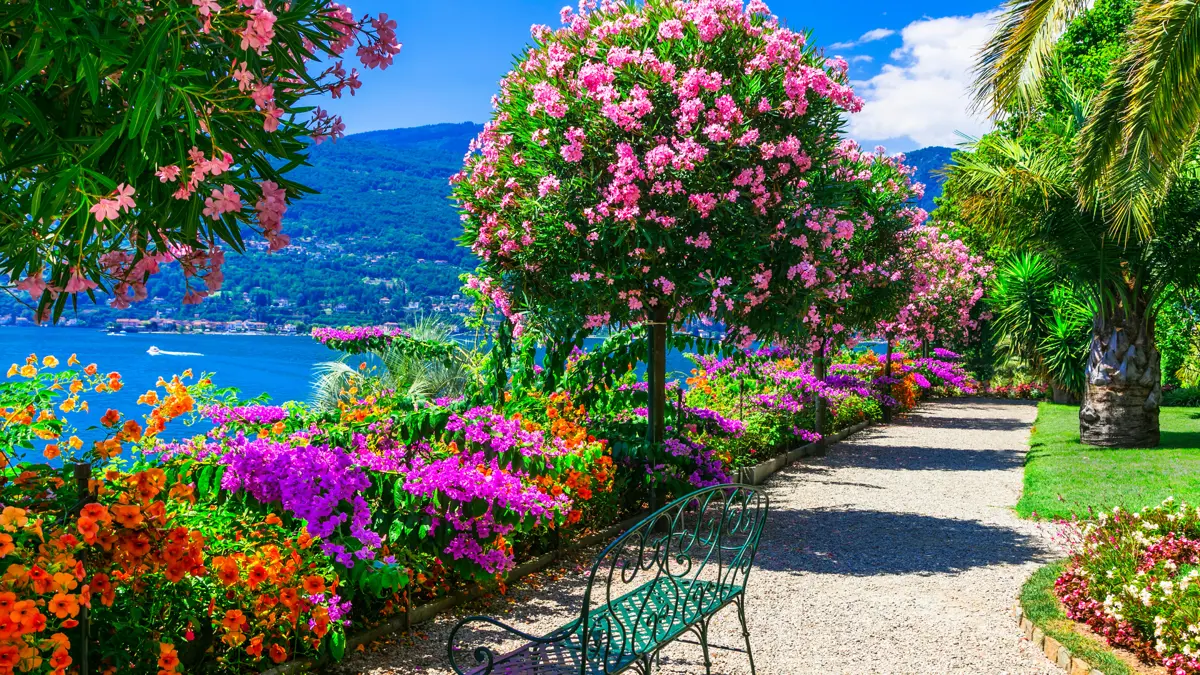
Lake Maggiore is a haven for garden lovers. There are two beautiful garden islands, Isola Bella and Isola Madra.
Isola Bella (previously known as Isola Inferiore) was mainly populated by a small community of fishermen. It wasn't until 1630 that the aristocratic Borromeo family transformed this rocky island into something truly magnificent.
By shipping in soil, the sons of Carlo Borromeo were able to begin working with architects on the gardens and they were finally completed in 1671. Isola Madre, measuring 220m wide and 330m long, is the biggest of the islands in Lake Maggiore.
The Isola Bella Garden features a spectacular open-air theatre and the unicorn at the top of the hill, which is the symbol of the Borromeo family.
In Springtime camellias, rhododendrons, and azaleas are spread across 10 terraces along with many beautiful statues. Isola Madre island is mainly occupied by the fairytale botanical garden which is blessed with a micro-climate. Here wisteria, rare sub-tropical plants, exotic flowers and colourful birds can be found.
Villa Garzoni in Montecatini, Italy
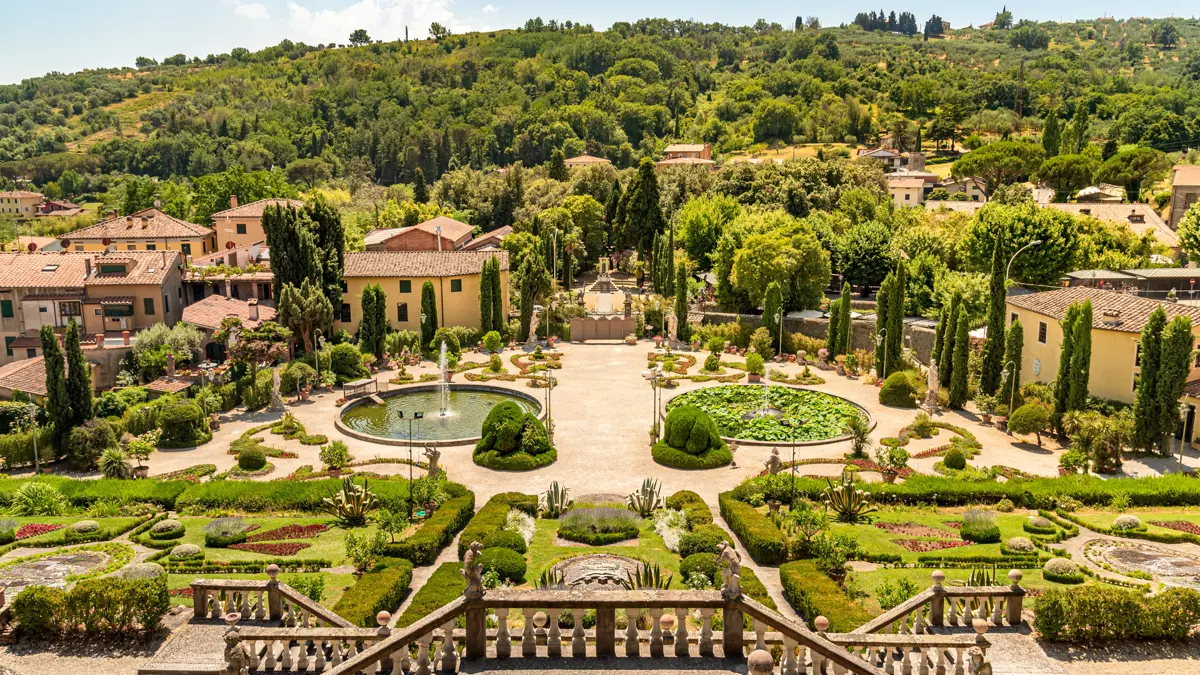
The Villa Garzoni is located on the Tuscan hillside near Montecatini and was the birthplace of Carlo Lorenzini, the author of the beloved children's tale, Pinocchio.
We tell no lies when we say that the Garzoni Garden is one of the most beautiful gardens in Italy! The gardens took a staggering 170 years to create and construct and are famous for their ornate features, water fountains and statues.
Building into the hillside, these flowerbeds and waterfalls concertina down the hill to the bottom where the gardens open up to show stunning statues and other features.
Seasonal flowers bloom in the lower beds, roses line some of the paths and there are box hedges and palm trees. At the high point of the garden, above the water staircase, there's a large pool with a fountain above it and a collection of 19th century camellias. Magical parts of the garden include the labyrinth and butterfly house which contains hundreds of different and exotic butterfly species.
Tivoli Park & Ljubljana Botanical Gardens, Slovenia
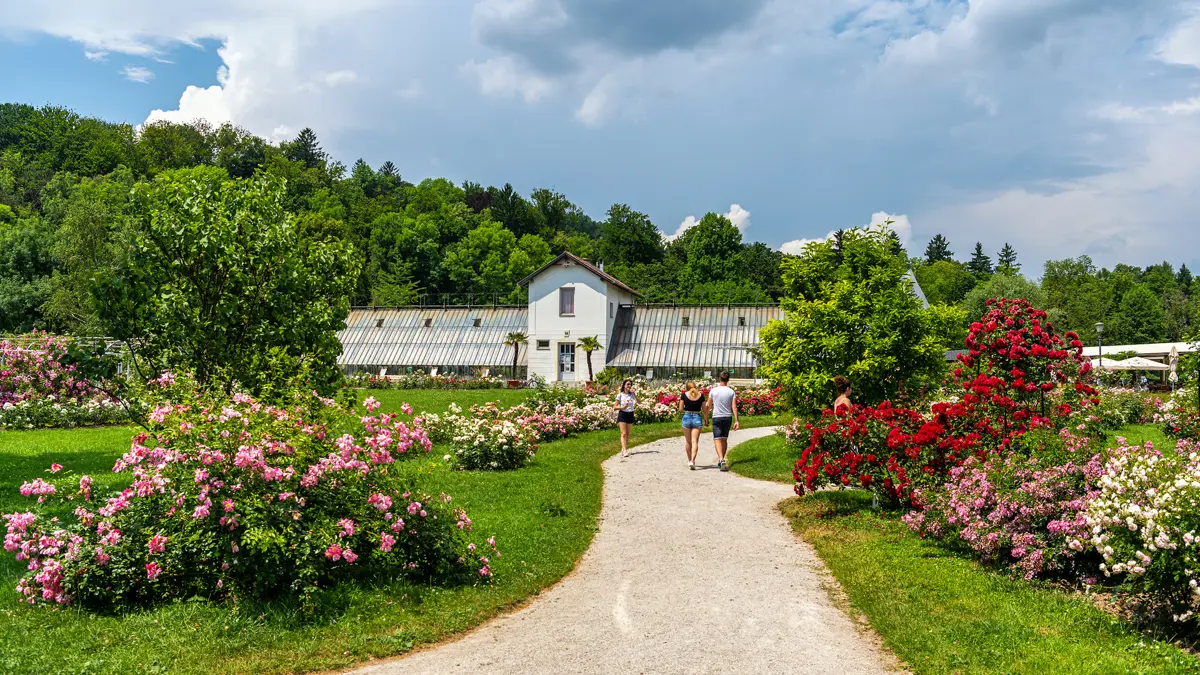
Tivoli Park is Ljubljana’s largest and most picturesque green space, stretching right into the city centre. Designed in 1813, the park features elegant promenades, a scenic fish pond, and a charming glasshouse filled with tropical and carnivorous plants - think pineapples, vanilla orchids, and black pepper.
Architect Jože Plečnik’s Jakopič Promenade leads to Tivoli Mansion and doubles as an open-air gallery for striking photo exhibitions. With walking trails that blend into the forested Rožnik Hill, it’s the perfect spot to unwind and discover the city’s natural side.
The Botanical Gardens at the University of Ljubljana are world famous. Established in 1810, they are renowned for being the oldest cultural, scientific and educational gardens that the country has to offer. Thanks to the country's climate, they offer an array of stunning gardens to enjoy.
The gardens hold more than 4,500 different species and subspecies of flora, some of which are considered endangered and in need of preservation. In amongst these beautiful gardens there is an arboretum, tropical glasshouse, water-gardens and a Mediterranean area. The gardens are now officially part of the University of Ljubljana, what an amazing setting to relax in between lectures!
Schynige Platte Botanical Alpine Garden, Bernese Oberland, Switzerland

The garden took only one year to create. Construction work began in 1928, and the area was fenced off. The following year in 1929, the gardens opened their gates to the public.
Accessed by the scenic mountain railway, the garden sits just shy of 2,000m. There are over 600 native species of Swiss Alpine wildflowers to see and, in particular, this garden focuses on the research of high-altitude flora.
Graced with the monumental backdrop of the Eiger, Jungfrau and Mönch mountains, the Schynige Platte Botanical Alpine Garden is a stunning and unique wild garden that encourages you to climb, walk, clamber around and explore.